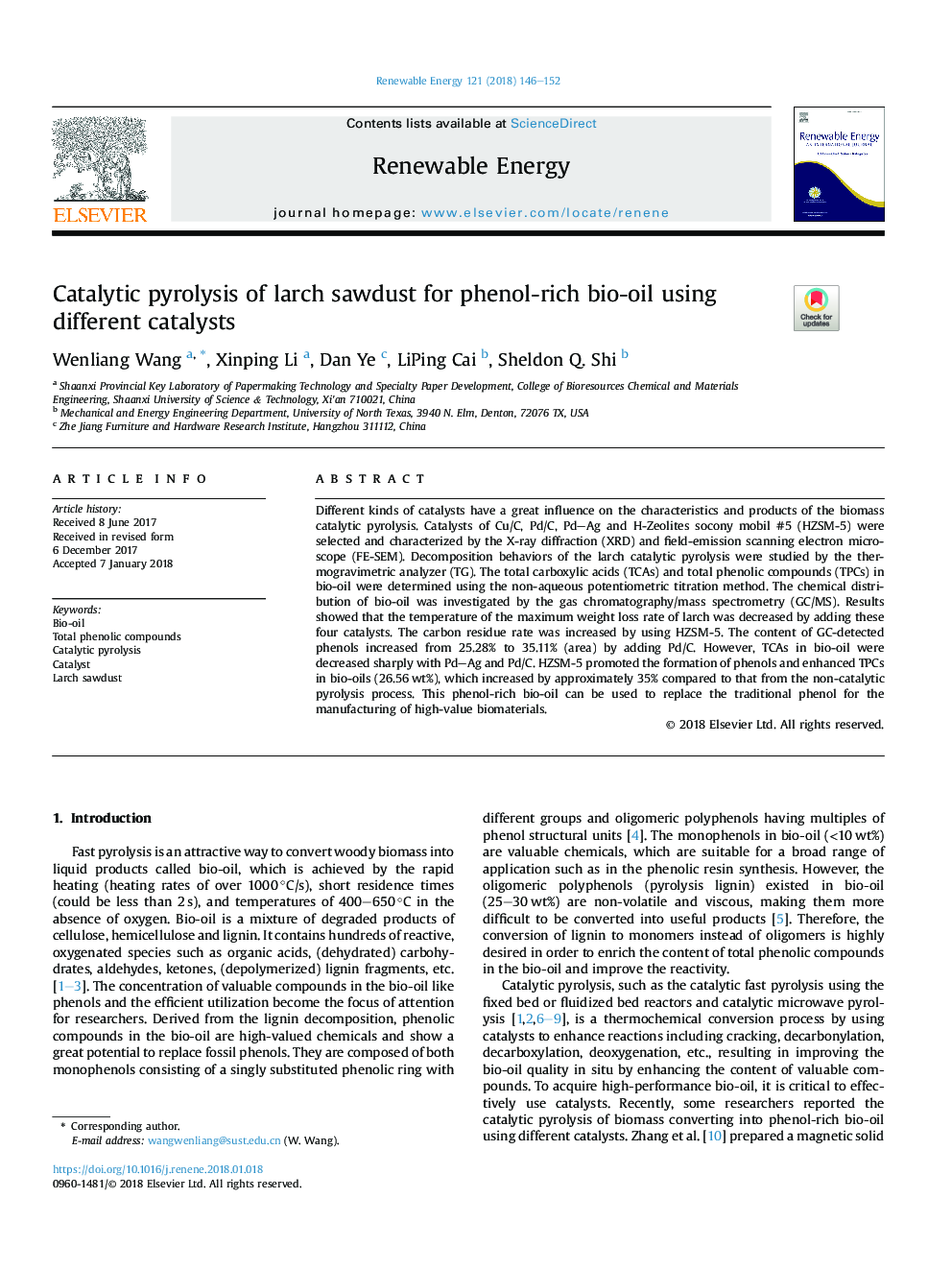| Article ID | Journal | Published Year | Pages | File Type |
|---|---|---|---|---|
| 6764714 | Renewable Energy | 2018 | 7 Pages |
Abstract
Different kinds of catalysts have a great influence on the characteristics and products of the biomass catalytic pyrolysis. Catalysts of Cu/C, Pd/C, PdAg and H-Zeolites socony mobil #5 (HZSM-5) were selected and characterized by the X-ray diffraction (XRD) and field-emission scanning electron microscope (FE-SEM). Decomposition behaviors of the larch catalytic pyrolysis were studied by the thermogravimetric analyzer (TG). The total carboxylic acids (TCAs) and total phenolic compounds (TPCs) in bio-oil were determined using the non-aqueous potentiometric titration method. The chemical distribution of bio-oil was investigated by the gas chromatography/mass spectrometry (GC/MS). Results showed that the temperature of the maximum weight loss rate of larch was decreased by adding these four catalysts. The carbon residue rate was increased by using HZSM-5. The content of GC-detected phenols increased from 25.28% to 35.11% (area) by adding Pd/C. However, TCAs in bio-oil were decreased sharply with PdAg and Pd/C. HZSM-5 promoted the formation of phenols and enhanced TPCs in bio-oils (26.56â¯wt%), which increased by approximately 35% compared to that from the non-catalytic pyrolysis process. This phenol-rich bio-oil can be used to replace the traditional phenol for the manufacturing of high-value biomaterials.
Related Topics
Physical Sciences and Engineering
Energy
Renewable Energy, Sustainability and the Environment
Authors
Wenliang Wang, Xinping Li, Dan Ye, LiPing Cai, Sheldon Q. Shi,
